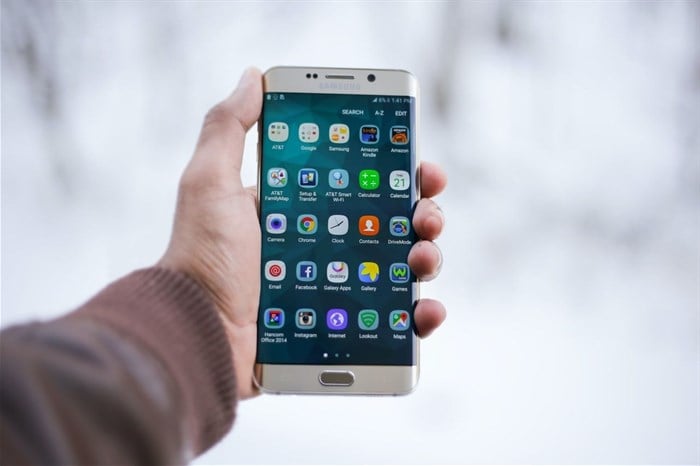On 18 March 2021, the Pretoria High Court handed down judgment in the matter between Samsung Electronics SA and the South African Revenue Service (Sars). The Court had to decide whether the Samsung Galaxy S7 should be classified under the "machine" tariff, as contended by Samsung, or remain under its "telephone" tariff determination.

Photo by MOHI SYED from
PexelsOn 3 July 2017, Samsung applied for a tariff determination for its imported multi-functional device, the Samsung Galaxy S7, under tariff heading TH 8517.62.90 or tariff heading TH 8517.69 (the machine tariff). This was after Samsung discovered that a competitor product had received a tariff determination under tariff heading TH 8517.62.90 - the classification of "machines for the reception, conversion and transmission or regeneration of voice, images or other data". This classification also applies to laptops and computers, and is duty free.
At the time of importation, Samsung's Galaxy S7 had received a determination under TH 8517.12.10 - the classification for “telephones for cellular networks or for other wireless networks designed for use when carried in the hand or on the person” (the telephone tariff), which is subject to an ad valorem duty of 9%.
Samsung immediately submitted applications for refunds of the customs duty on previously imported goods. On 27 September 2017, and after having reconsidered the Samsung Galaxy S7's specifications, Sars agreed with Samsung that the devices were “...smart devices classifiable under tariff sub-heading 8517.62.90" and gave Samsung a formal tariff determination under tariff heading TH 8517.62.90 (the machine tariff). Sars made undertakings to process Samsung's refund applications.
Rescinding new classification
However, on 11 April 2018, Sars again changed its mind and withdrew Samsung's determinations under the machine tariff, with retrospective effect from 4 August 2017. The withdrawal meant that Samsung was no longer entitled to any refunds with respect to previous imports, and was now liable for duties in respect of the imported products. In its place, Sars made a new determination in terms of which the Galaxy S7 was classified under tariff heading TH 8517.12.10 (the telephone tariff).
Samsung insisted that the use of the device had long evolved from a principally telephony function; that the use of the device relates to the connection to the internet, social media, music and games, and not mainly the making of telephone calls. As such, the appropriate classification was the TH 8517.62.90 (the machine tariff). Samsung relied on a number of market survey reports, which indicated that the principal functions of smartphones, like the Samsung S7, are mainly not for telephony use, but is rather for apps (which are not available in a traditional mobile phone); lightning-quick wireless internet connection; video calls, messaging and pictures, and a range of data communications. On this basis, voice transmission is not the principal function of products like the Galaxy S7, and therefore the appropriate classification of the product is under the machine tariff.
Sars, on the other hand, maintained that the use of the product, using the wireless network to make WhatsApp calls, Skype, etc. fell under the definition of operating as a telephone "for other wireless networks under sub-heading 8517.12". Sars's strategy here was perhaps more fundamentalist - drawing the Court's attention to the device's basic constitutive features, which cumulatively meant the Galaxy S7, was a telephone facility network. For example, Sars stated that:
- “The design is such that they are small enough to be carried in the hand or on the person with a high resolution touchscreen of approximately 5 inches;
- It has a speaker at one end which is audible when placed against the operator’s ear and at the other end has a microphone to receive speech or voice from the operator’s mouth;
- It has slots for the insertion of sim cards to operate as telephones and communicate on a cellular network; and
- It has electronic keypads and software which enable the user to dial a telephone number to initiate a telephone call and to terminate a telephone call.”
Computer or phone?
This appears to be a rather elementary view of devices such as the Galaxy S7, which, in use and design, resembles a computer more than a traditional telephone. A research report from a global study conducted by Counterpoint shows that smartphone users use their devices for mobile computing activities primarily. Many users run businesses and other affairs from their devices, while others consume digital content.
Despite this, the Court disagreed with Samsung, and held that Samsung's assertion that the product is not a telephone for cellular networks but a machine akin to a laptop or desktop was disingenuous - given it has telephony functions. The Court was unpersuaded by the fact that the device has functions found in laptops and desktops, holding that those functions do not detract from its principal function of being a telephone for cellular networks.
Post-use premise
Ultimately, Samsung's arguments failed because they were premised on the post-use of the product. The Court was clear that the standard for determining the appropriate tariff heading that the device would fall under was the objective characteristics and properties of the device at the time of presentation for customs clearance. Accordingly, Samsung's intention regarding the customer's use of the product after importation was, contrary to Samsung's premise, not conclusive of its classification.
The Court concluded that the Galaxy S7 has all the features that conform to the description of tariff heading TH 8517.12.90 - in that it is hand-held and its principal function is telephony. Samsung's application was dismissed with costs.
Competing businesses that import cellphone products into South Africa using the machine tariff now face the risk that Sars could attempt to re-classify those devices in line with the Samsung judgment. This means importers could be liable for an ad valorem duty of 9% if devices are re-classified under the telephone tariff.























